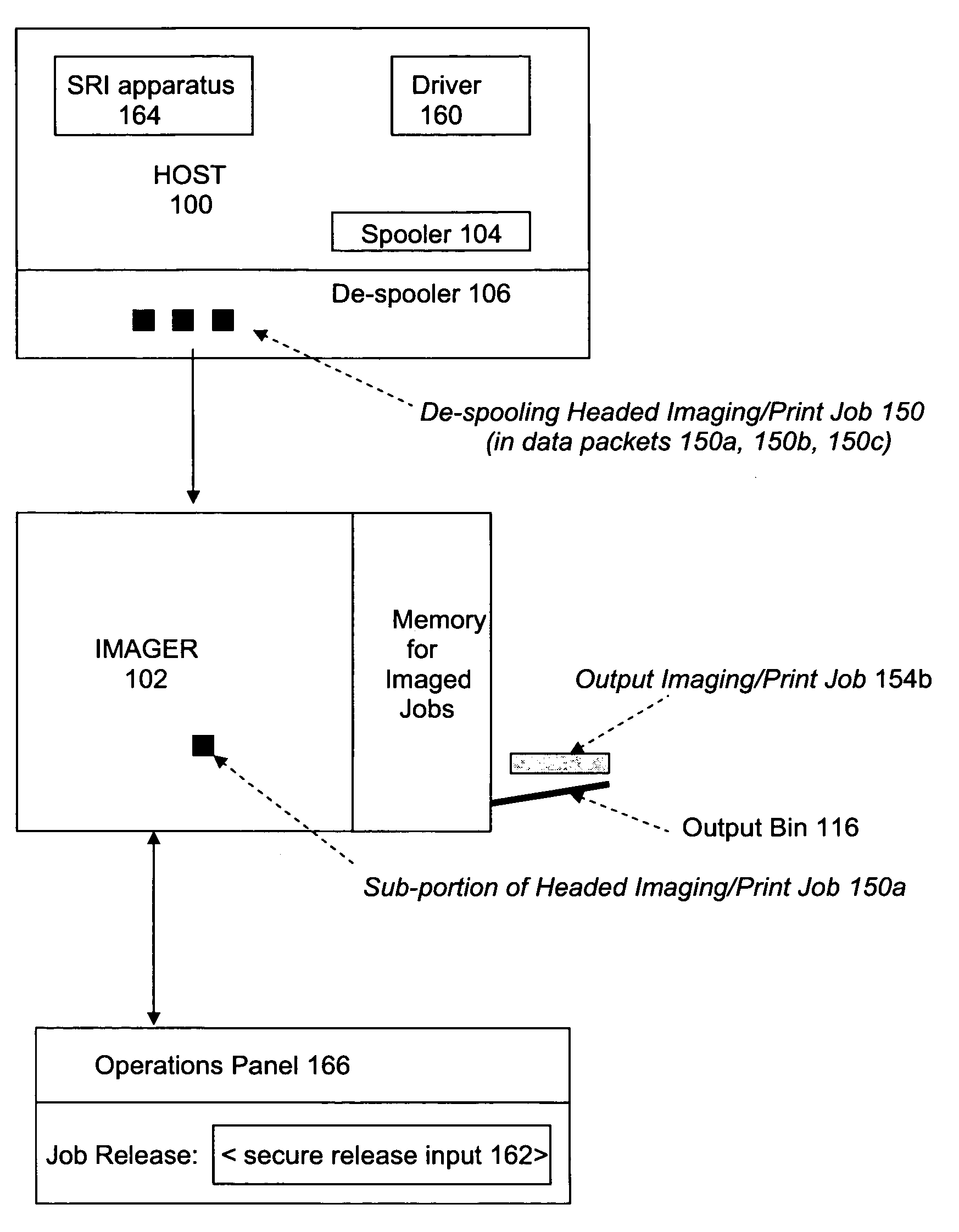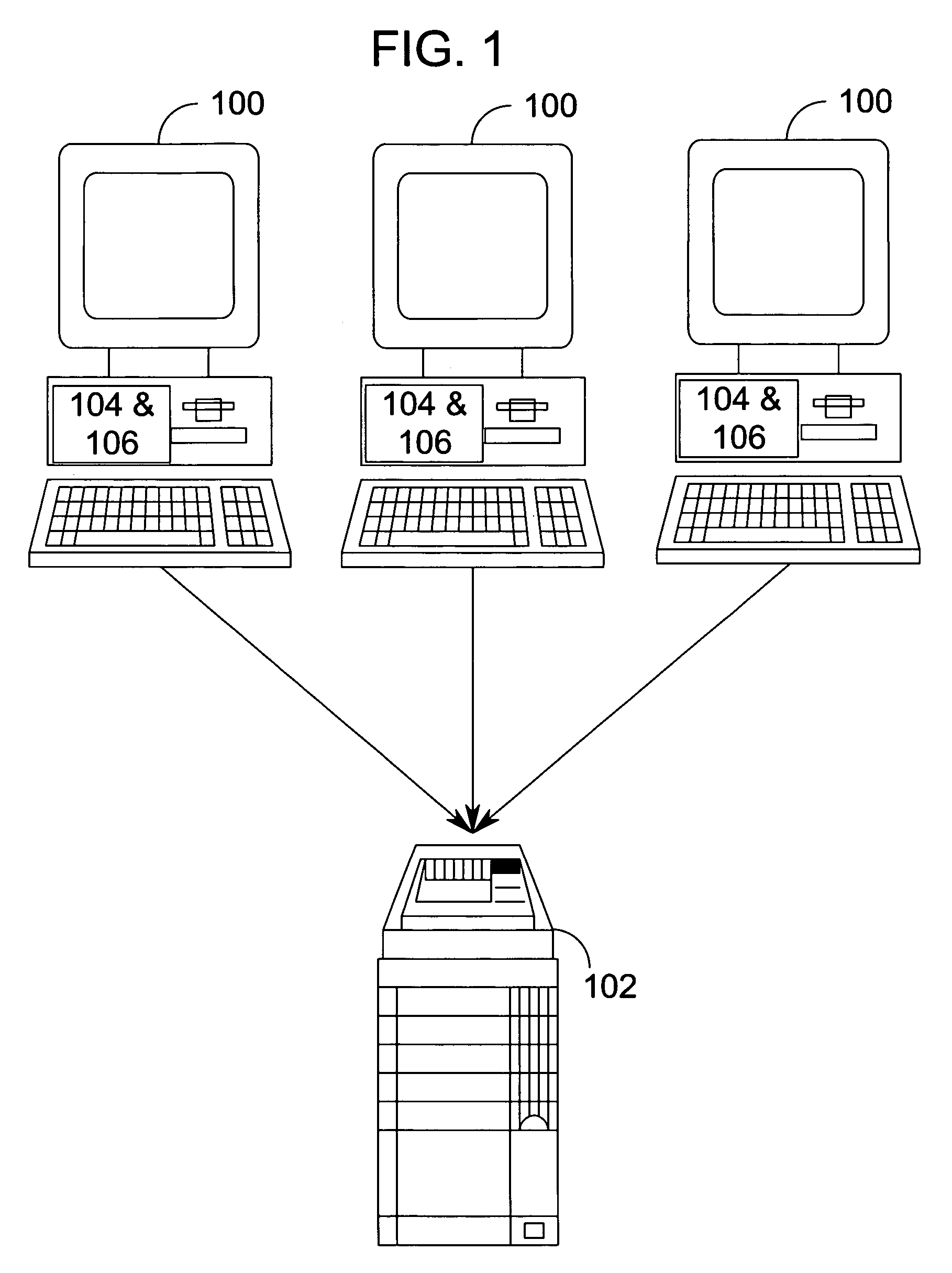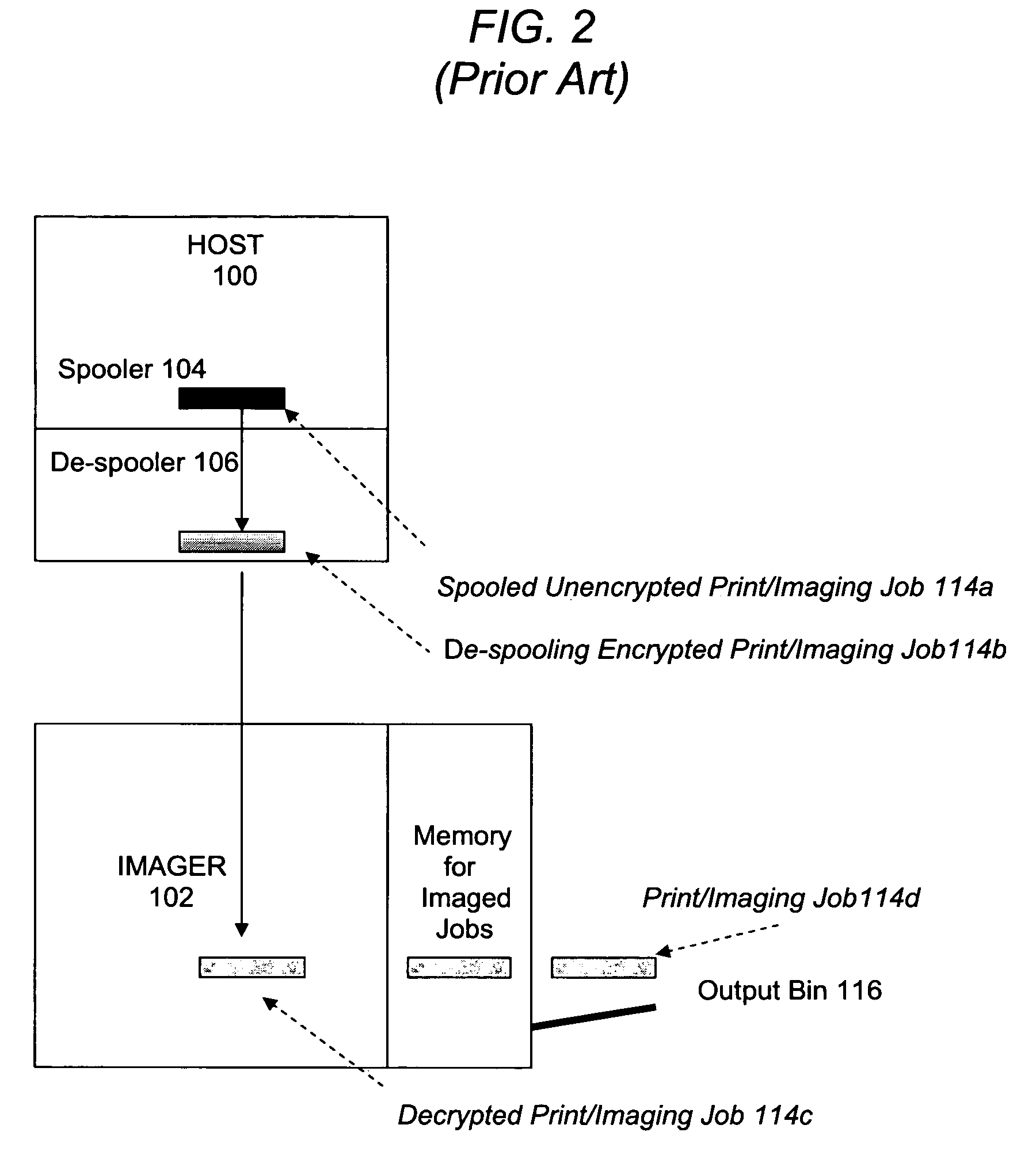Secured release method and system for transmitting and imaging a print job in which a security attribute in the print job header will prevent acceptance of subsequent data packets until a user performs authentication on the imaging device
a security attribute and print job technology, applied in the direction of digital output to print units, visual presentation using printers, instruments, etc., can solve the problems of not protecting the print job from being accessed, requiring a specially designed output bin, and all the prior art methods
- Summary
- Abstract
- Description
- Claims
- Application Information
AI Technical Summary
Benefits of technology
Problems solved by technology
Method used
Image
Examples
Embodiment Construction
[0033]The present invention is directed to an effective system for securing the release of an imaging / print job, where the imaging / print job is retained on the client host device 100 until it is securely released to an imaging device 102.
[0034]The present invention uses a headed imaging / print job 150 (FIG. 7) that includes a print job header 152 and an imaging / print job 154a. If the imaging / print job (e.g. a document) is to be securely released, the print job header 152 includes a secured release indicative command / code 156. The headed imaging / print job 150 may be divided into data packets (shown as 150a, 150b, 150c).
[0035]The system preferably works with a pre-existing host device 100 and its print subsystem (e.g. print spooler 104 and de-spooler 106 (e.g. print processor and port monitor)). Preferably the host device 100 print subsystem does not need to be modified except for the installation of a corresponding imaging device driver 160 (e.g. a printer driver). The imaging device ...
PUM
 Login to View More
Login to View More Abstract
Description
Claims
Application Information
 Login to View More
Login to View More - R&D
- Intellectual Property
- Life Sciences
- Materials
- Tech Scout
- Unparalleled Data Quality
- Higher Quality Content
- 60% Fewer Hallucinations
Browse by: Latest US Patents, China's latest patents, Technical Efficacy Thesaurus, Application Domain, Technology Topic, Popular Technical Reports.
© 2025 PatSnap. All rights reserved.Legal|Privacy policy|Modern Slavery Act Transparency Statement|Sitemap|About US| Contact US: help@patsnap.com



